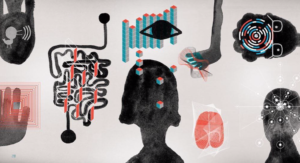
Credit: John Hersey via @spectrumnewsgo / Instagram
Death in old age was historically attributed to just that—i.e., old age and natural causes. However, with increasing life expectancy and the desire to maintain good health in older age for as long as possible (so-called healthy aging), calls to recognize aging as a disease that can be treated are increasingly relevant and debated, despite the lack of a universally accepted set of aging biomarkers and uncertainty about the time of transition to disease.
Progress in being able to classify, and thus treat, aging as a disease was made recently when WHO implemented an extension code for ‘Aging-related’ (XT9T) diseases—defined as those “caused by pathological processes which persistently lead to the loss of organism’s adaptation and progress in older ages”—in the latest version of the International Classification of Diseases, ICD-11. The new code, implemented as a result of a joint proposal submitted to WHO’s ICD-11 Task Force by researchers from the Biogerontology Research Foundation, the International Longevity Alliance, and the Council for Public Health and the Problems of Demography, can be immediately applied to relevant conditions listed in ICD-11 as well as to newly recognized conditions in the future. As ICD codes are prerequisite for the registration of all new drugs and therapies, the recognition of age as a pathological process, together with replacement of the ICD-10 ‘Senility’ (R54) code with ‘Old age’ (MG2A) in ICD-11, represents undeniable progress towards overcoming the regulatory obstacles that have thus far hampered the development of therapeutic interventions and preventative strategies targeting aging and age-related diseases.
READ: IT’S TAKING LONGER FOR PEOPLE TO FEEL OLDER
According to WHO, 22% of the world’s population (roughly 2 billion people) will be over the age of 60 years by 2050, an increase from just 12% (about 900 million) in 2015; by 2020, people aged 60 years and older will outnumber children younger than 5 years. This population aging (a shift in the median age of a country’s population towards older ages) was first evident in high-income countries such as Japan, but low-income and middle-income countries (LMICs) are now experiencing the greatest rate of change: by 2050, 80% of people older than 60 years are predicted to be residing in LMICs. Increased life expectancy can be seen as a sign of progress and prosperity in a country, reflecting improvements in health care (access, availability, and affordability), diet, work safety, and socioeconomic status together with reductions in famine, conflicts, communicable diseases, and risky health behaviors such as smoking. But the benefits of living longer are counteracted by the global rise in ill health in old age due to the increasing burden of non-communicable diseases (predominantly obesity, diabetes, cardiovascular diseases, and cancer) and aging-related conditions. Moreover, how to provide adequate health and social care to an aging population is a major economic challenge for all countries, threatening to cripple already overstretched health and social care budgets in some.
Although implementation of the extension code XT9T in ICD-11 is not tantamount to formal recognition of aging as a disease, it does signal acknowledgment by WHO of aging as a major disease risk factor and of the considerable public health problem posed by aging-related diseases. Whether this move will be enough to entice the pharmaceutical industry to initiate development programs targeting the aging process and, more broadly, human lifespan remains to be seen. However, given the impending economic threat posed by population aging and the potential benefits of intervention, ranging from better health in old age for individuals to decreased health-care costs, increased workplace productivity, and increased economic growth for countries, progress on this front is vital.
Read the entire article at The Lancet.










